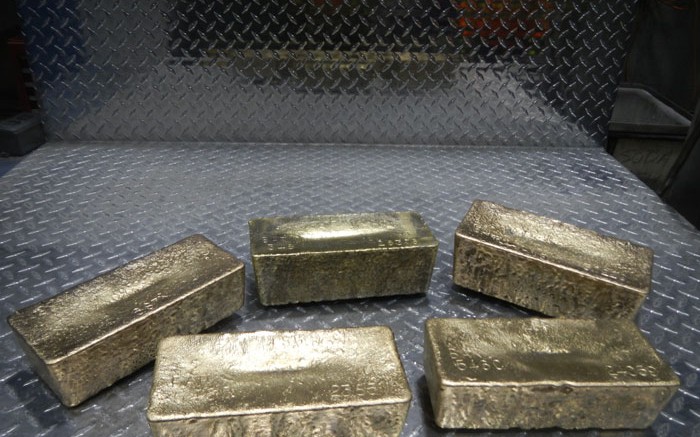Lake Shore Gold (TSX: LSG; NYSE-MKT: LSG) has served up an improved cost structure and stronger operating results in Ontario’s Timmins gold camp.
Since releasing its third-quarter results, the company’s shares have climbed 8% and were trading for 41¢ on Nov. 7.
The gold miner has also improved its bottom line, as evidenced by cutting last year’s third-quarter loss of $10.8 million to $1.7 million in mid-November.
It has accomplished this with stronger operations. Earnings from mine operations nearly tripled to $7.6 million, as production jumped 38% to 28,900 oz. for the quarter.
This led to gold sales of 32,300 oz. — up 58% from last year’s third quarter, which was more than enough to offset lower gold prices.
The improvement came as the company realized the benefits of years of investment. Lake Shore had been producing gold while expanding its Bell Creek mill — a process which was completed in September.
The Bell Creek mill can now handle 50% more ore, and in October it exceeded its nameplate capacity, as the mill. Designed to process 3,000 tonnes per day, it reached an average of 3,500 tonnes for the month.
There was more good news to be found along the expenses line in the income statement: Lake Shore cut operating costs to US$701 per oz., which is a 31% improvement from a year earlier and 23% better than the second quarter.
It says that all-in sustaining costs came in at US$1,027 per oz., but it expects to get that number below US$1,000 per oz. in the fourth quarter.
Part of what is driving both lower costs and better production is higher-grade ore.
With an average grade of 4.7 grams per tonne for the quarter, Lake Shore improved 34% over the grades it was milling at this time last year, and it says the higher-grade zone at its Timmins West mine expands as it deepens.
The good operational news means the company could generate net free cash flow before 2014.
It also reaffirmed its year-end guidance of 120,000 to 135,000 oz., at cash operating costs in the range of US$800 to US$875 per oz..
But while the company’s third-quarter cash flow came in at 3¢ per share, it missed Haywood Securities analyst Kerry Smith’s estimate of 4¢ per share.
Kerry rates Lake Shore as a “hold,” with a 60¢ target price.
“The balance sheet continues to be the worry, as working capital at quarter end was only $2.8 million,” Kerry wrote in his research note.
The balance sheet also shows cash and bullion of $15.2 million, and debt of $135.2 million. The company has made 10 of its 29 payments due to Sprott in connection with a gold-linked loan. It has an outstanding principal of $22 million on the loan and another $103 million in principal on its convertible debentures.
Speaking on a conference call, Lake Shore’s president and CEO Anthony Makuch said the trend in operating results seen in October indicates more good things to come. The months saw record production of 17,500 oz. gold and an average head grade of 5.2 grams per tonne.


Be the first to comment on "Production up, costs down for Lake Shore"